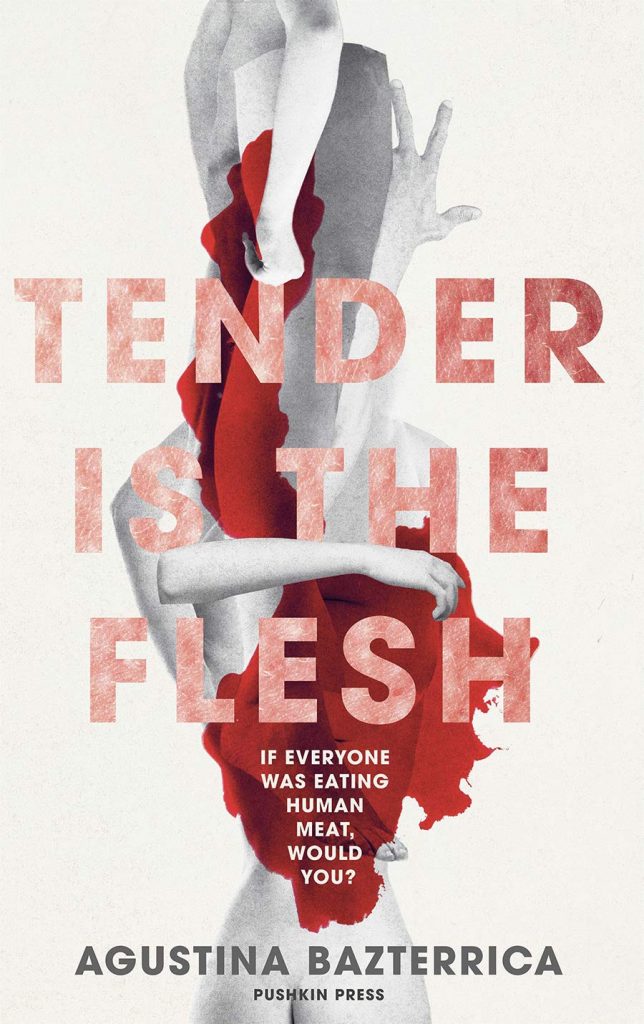
I was excited about reading this novel. It felt like it would be the perfect Halloween read and I wasn’t wrong. If you can imagine a world in which a virus has made all animal flesh deadly for humans, our hunger for meat leaves only one option available. No guesses as to what that might be.
Once you’ve separated out your herds, made choices about how to dehumanise the meat – remove its vocal chords, never dress it, bring it up in cages, remove pregnant heads’ limbs to keep them from harming themselves, refer to it euphemistically etc. – there is still no getting away from the look of an arm or torso hanging in a butchers shop, or the desirable curve of a naked male or female; the bestial pretence is wafer thin.
Tender is the Flesh is of course an exploration of monstrosity. Who are the real beasts? No question, it is us.
Having read Meat by Joseph D’ Lacey, I was primed for the territory of this novel, and whilst I kept finding myself longing to return to Meat, preferring its more in-depth exploration of character, the thing I found most meaningful about Tender is the Flesh was its lack of redemption. The ending (and I think I can say this without spoiling anything) is unremittingly bleak.
You’ll know if this novel is for you. If you’ve already read Tender is the Flesh, or you are looking for an English interpretation of this subject matter, I thoroughly recommend reading Meat. You can find buy it here. Both books are compelling in their exploration of human depravity and self-deception. This kind of horrific and unashamedly bloody depiction of these ugly human traits won’t be for everyone, but if you’re in the mood for something dark, Tender is the Flesh, translated from the Spanish by Sarah Moses, is a page-turner.
I’ll be reviewing Death in her Hands by Ottessa Moshfegh next.